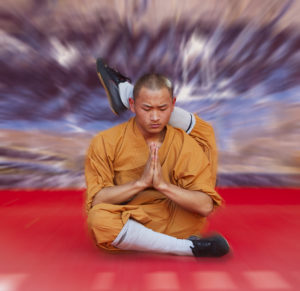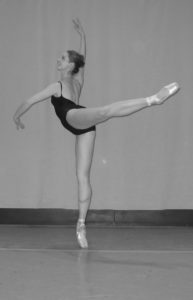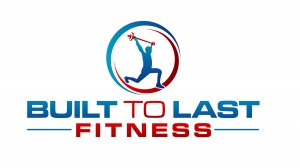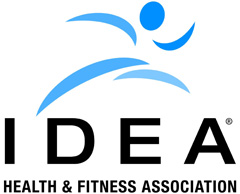Scary-good Mobility
Scary-good Mobility and Freaky Flexibility

“Notice that the stiffest tree is most easily cracked, while the bamboo or willow survives by bending with the wind.”
-Bruce Lee
Really good. Crazy good. Scary good! Scary is one of those words we use to describe something that jumps out at us and causes alarm. This article is all about mobility and flexibility – mobility so good that it catches people off-guard. We look to our top athletes, dancers, and yogis to demonstrate this level of physical achievement. The truth is that there is nothing supernatural about this type of skill acquisition. In this article, we will explore the scientific concepts of mobility and flexibility, a little physiology, training principles, and outline a bulleted list of steps you can take TODAY to improve your own range of motion.
What is mobility?
Oftentimes the words mobility and flexibility are used interchangeably. Depending on the context, and which health professional is using the terms, the definitions of mobility and flexibility may vary. Mobility and flexibility are certainly related, yet there are subtle differences that separate them. The term flexibility is used to demonstrate a tissue’s (e.g. muscle’s) ability to passively lengthen, while being moved through a range of motion. Here is an example. Picture an athlete lying on her back while her left leg is pulled up and back by a stretch coach. The left leg may go far past 90 degrees, demonstrating a good deal of passive hamstring flexibility. This athlete may also demonstrate great hip mobility if she can deliver a controlled high kick at head level. A key component of mobility is that it requires good motor control from the nervous system. Flexibility does not. The kick from the example above is a good indicator of mobility if the woman truly “owns the movement.” If she happens to kick high, but the kick is wild and erratic – she might be flexible, but one would not say she has great mobility. We can’t dismiss flexibility however. Flexibility is a prerequisite to increased mobility. This is why sleep, nutrition, hydration, and other factors that affect tissue health, in turn play a role in mobility. Seek to acquire both flexibility and mobility for maximum performance.
Key Concepts:
Hardware and Software:
The human body is analogous to a computer. Its functionality depends both on its hardware and its software. The functionality of human mobility is affected by its structural elements like bones, muscles, ligaments, tendons, and fascia (the hardware) as well as the electrochemical magic of the brain and nervous system (the software) which operates the whole body. Regardless of the training program or goal, the hardware and the software both need to be considered. To briefly illustrate this concept, imagine a person trying to follow a great flexibility protocol who is extremely stressed due to work and having difficulty sleeping. This individual will have an overly taxed nervous system and will be limited in his progress. Alternatively, a person with arthritis or disc issues will also be limited, even though he or she has low stress and terrific sleep habits. This is a simple concept, but we need to start here before moving on to other technical details.
Joints and Joint Mobilizations:
What is a joint? Quite simply, a joint is the site where two segments connect. Joints of the body occur where two bones meet. They are secured in place with tendons, ligaments, fascia and cartilage. There are also several types of joints such as ball and socket, hinge, etc. Each joint in the body has an acceptable range of motion (ROM). Physical therapists use instruments called goniometers to measure range of motion. If a joint doesn’t articulate properly, there will be a limit to that person’s mobility. Contained in each joint is a substance called synovial fluid. Synovial fluid coats the inside of the joint capsule and provides lubrication. Moving joints through their full available range of motion helps distribute the synovial fluid, which coats the gliding surfaces, and therefore enables increased ease of movement. Injury or inflammation will negatively impact the ability to go into a full ROM. Physical therapists and chiropractors can mobilize joints while the patient remains passive, however active mobilizations whether assisted or unassisted, are better due to the additional engagement by the nervous system. The Functional Range Conditioning System utilizes CARs or controlled articular rotations to maintain joint health. The goal of CARs is to move each joint in a circular pattern through its full usable range of motion. The purpose is twofold: to develope motor control of the muscles and joints and to bathe the inside of the joint in that rich synovial fluid. How often do your joints need to move like this? Dr. Andrea Spina, the system’s founder quips “every damn day!” There are other techniques to mobilize joints as well. Joint segments can also be “distracted” by gently being pulled into a more open position by using a vector force. Distractions are a means of “creating space” for freedom of movement. It is important to spend time mobilizing joints through their full range of motion. Resistance band assisted mobilizations are great because they allow a person to actively create distraction and provide a lot of bang for your buck.
Flexibility:
I attended a Functional Movement Systems (FMS) seminar instructed by Brett Jones. Brett is more than a trusted professional within the fitness industry. He is the Director of Education at Strong First and has taught for FMS since 2006. Coaches and trainers everywhere affectionately think of him as a guru. We were all excited to hear Brett teach us the secrets of flexibility. He said “look at the most flexible people in the world – martial artists, gymnasts, dancers, yogis. What is the one thing they all have in common? They all stretch.” Yes, stretching is at the heart of flexibility training.
There are several types of stretching and various protocols one can follow when beginning a flexibility program. It is important to understand what stretching does physiologically. During a stretch, muscle fibers and their components elongate as small structures called sarcomeres within the muscle fiber begin separating actin and myosin protein filaments. If a muscle fiber is extended to its maximum length, the force is distributed to the various connective tissues which join the muscle. The nervous system is monitoring and reacting to this whole process via proprioceptors. These sensory organs send information to the spine letting it know that a stretch is occurring, and at what rate and force this is occurring. This initiates what is known as the stretch reflex which resists further lengthening of the muscle using involuntary muscle contraction. The strength of a muscle contraction is proportional to the strength of the nervous system signal. If you’ve ever jammed your finger you felt the power of a reflexive muscle contraction.
Wouldn’t it be great if you could harness the power of the nervous system to improve your flexibility? You can utilize the nervous system to change tissue length and muscle tone. The stretch reflex can be blunted by a wearing out of the signal. If a stretch is held while taking slow relaxed breaths, the nervous system will down-regulate. The discomfort brought on by the initial stretch will begin to subside after a period of time. The latest research suggests that if a stretch is held, the synaptic signal will weaken after 15 to 30 seconds, but is significantly down-regulated with longer holds of 2 + minutes. NOTE: The contortionists of the world who can bend themselves into a pretzel, lack the strong stretch reflex which can put the brakes on a normal individual’s flexibility. There are additional ways to cheat the nervous system in order to encourage muscle release for stretching. A common and effective method called contract-relax stretching, comes from the principles of proprioceptive neuromuscular facilitation (PNF). Reciprocal inhibition causes the antagonist of the muscle being contracted to relax. Therefore, you can bring a muscle into a stretched position, isometrically squeeze the muscles trying to resist this stretch, and then relax as you passively move the muscle into a deeper position of stretch. Bottom line, stretching is awesome and should be utilized to improve flexibility and mobility.
Training principles and adaptation:
There are two crucial concepts in training, the SAID principle and the Overload principle. SAID stands for Specific Adaptation to Imposed Demands and basically states that the body will adapt to the stimulus placed upon it. The overload principle states that progress will plateau if the same stimulus is placed on the body over and over. In order to improve and make further adaptation, additional, different, and or stronger stimuli need to be placed on the body. To be successful in acquiring mobility and flexibility, both the SAID and the Overload principle need to be considered. It is not uncommon to see Kung Fu masters, regardless of age, have exceptional levels of mobility. This does not happen by accident. Thousands of hours of consistent work yielded these results. The more frequent, more intense, and longer the period of training, the better the results will be. A friend and client, Emma, used to be a ballerina for the Jose Mateo Ballet Theatre company. The dancers would rehearse for roughly six hours a day, five days per week. Whenever the dancers were not actively engaged in practice, they would be stretching. It was second nature for the dancers to be working on flexibility all the time. The ballerinas would give several performances per year, including 25 of The Nutcracker alone. The performance schedule of professional ballerinas is obviously very aggressive. This is why it is not uncommon for dancers to end their careers in their 30s. Even after my client left dancing to begin a full time career as a nurse and new mom, she was still my most flexible client. Luckily, you don’t have to quit your job and compete for a spot at a top dance company in order to limber up. There are multiple systems which are available to you to help build flexibility.

My friend Emma Ward Nadeau
Systems and Resources:
There are several fantastic systems available which promote mobility and flexibility. Each utilize different protocols and incorporate stretching into their training plans. Time does not permit explaining each system in great detail, but each one has a number of disciples who have gotten great results. In no particular order, these are systems I recommend using to bolster your mobility and improve range of motion. I have personally tested each of these and they are very well-designed.
- FRC: Functional Range Conditioning
- GMB: Gold Medal Bodies (focused flexibility)
- John Engum’s Flexible Steel
- Various books by Pavel Tsatsoline (Relax into Stretch, Fast and Loose, Super Joints)
- Stretch To Win
- Kelly Starrett’s The Ready State (formerly MobilityWOD)
- Easy Flexibility
- Eric Wong’s Hip Flexibility Solution and Shoulder Flexibility Solution
Advanced (Ground Based) Systems:
Bonus Systems:
All of these systems require time and effort and the discipline to make it happen. If you’re not into doing homework or you just want to be under the supervision of a professional, there are other options for you. There are multiple stretching studios springing up around the country. Locally we have Lymbr and Stretch Lab. These are facilitated stretching studios where a stretch expert will assist you with a customized hands-on stretch routine. This type of detailed stretching with a professional will often work better than other soft tissue modalities such as massage for increasing range of motion.
Conclusion. Putting it all together.
Gaining mobility and flexibility may seem complicated, but it doesn’t have to be. Here is a list of seven steps you can take TODAY to improve your usable range of motion.
- Articulate your joints daily. Move them through their maximal pain-free ROM.
- Use excellent form when exercising. Use full range of motion and control the movements.
- Incorporate banded joint mobilizations in your routine. Create space in the joints.
- Stretch. Use a mix of dynamic and static stretching. Hold the static stretches for 2 minutes.
- Increase your daily activity. As the FMS slogan goes, Move Well, Move Often.
- Take care of nutrition and hydration. This will help tissue health.
- Be consistent and work to improve. It will take repeated efforts. Focus on progressing.
A lack of mobility sucks. As a human being you are entitled to change your physiology through smart consistent training. Being supple, flexible, and agile improves your overall wellness as well as athletic performance. The most amazing feats of mobility are not truly remarkable. What is remarkable are the levels of dedication, consistency, and patience that the top athletes put in to develop that skill. Most of us could use more mobility and would benefit from choosing a structured program to supplement our regular fitness regimen. Pick a system from the list above and run it. You will be amazed at how you can progress after just a few weeks. It is important to move, stretch, and strength train in our full range of motion. Our nervous system is a powerful force that can help or hinder our ability to increase our available range of motion. It will take time and effort, but with constant practice, you too can possess scary-good mobility.
To Your Lasting Fitness,
Matt


